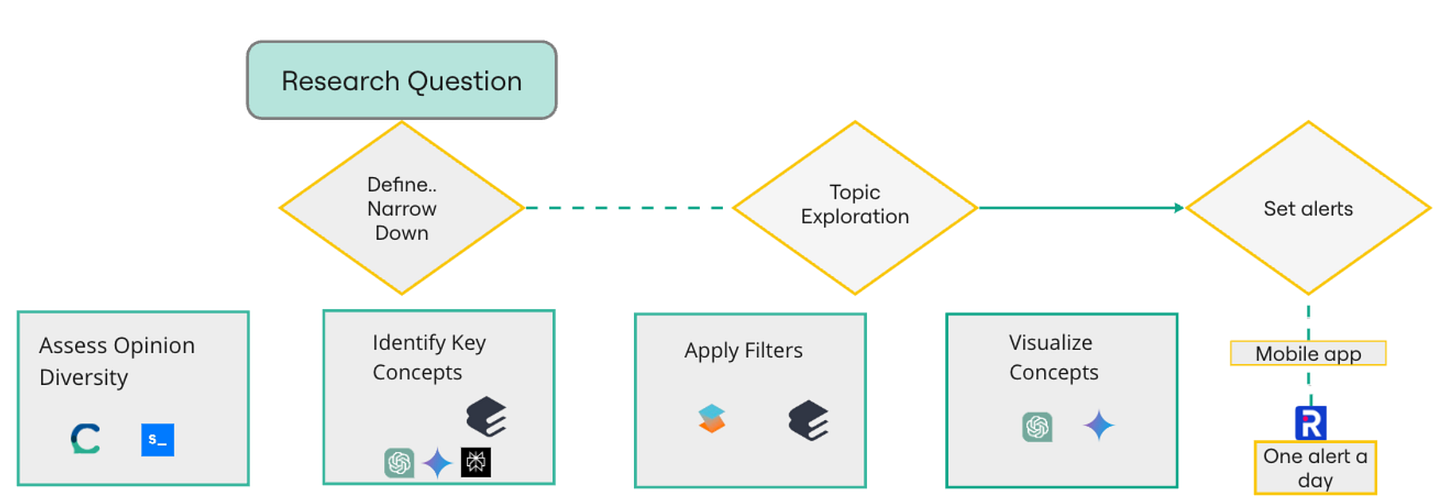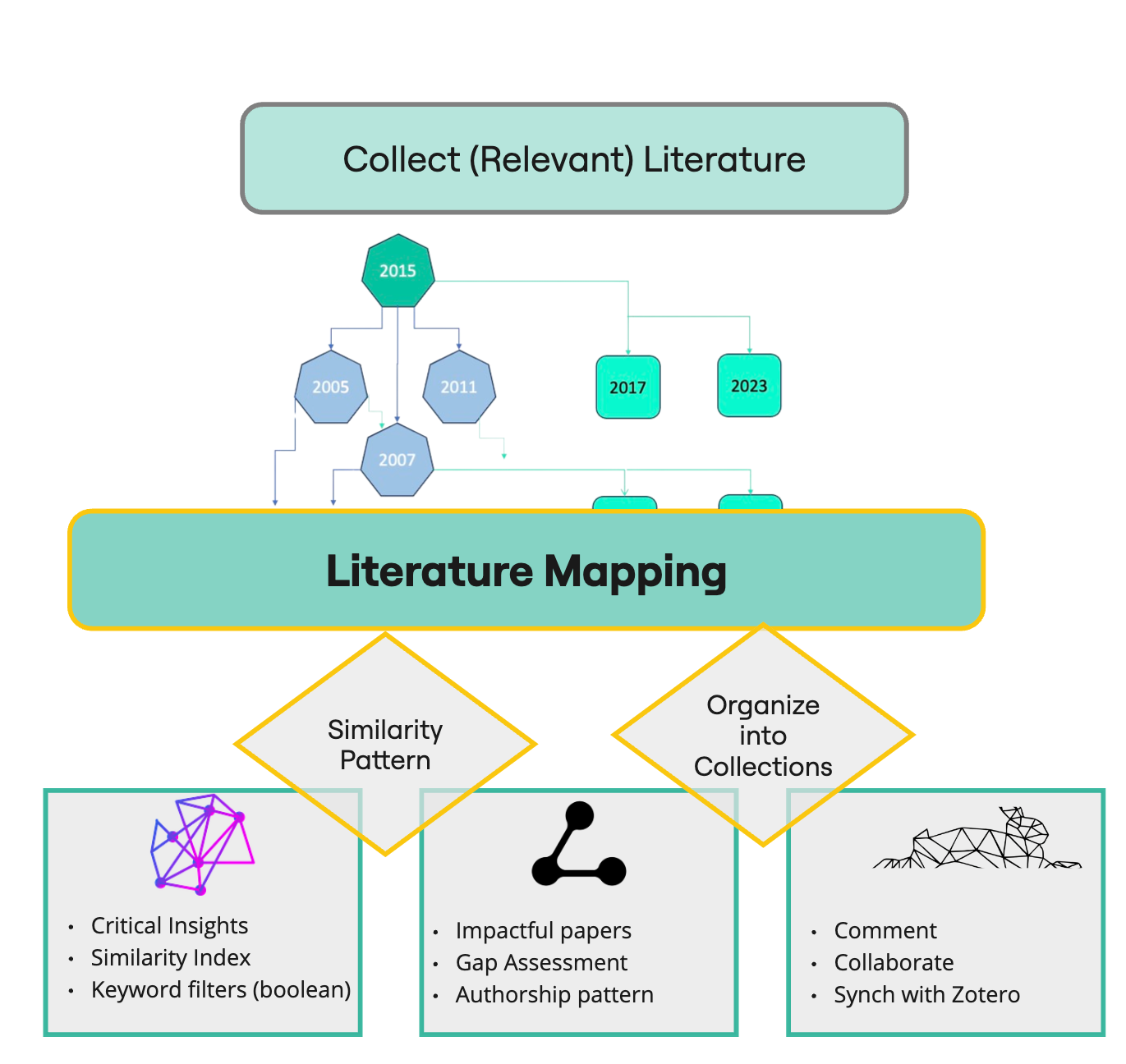Merry Christmas, research revolutionaries!
The Black Friday response blew me away! So many of you messaged about missing the sale window. I get it - end of semester is pure chaos! 🌪️
That's why I decided to open up ONE LAST special discount for 2024...
And if you've got professional development funds sitting in your 2024 budget, this is your chance to grab them before they expire!
In this masterclass, I teach my complete AI research workflow that helped me climb to top 3% global researchers on Upwork with just 50 minutes of daily work! (I’ve more clients outside Upwork + a full time job + content creation).
Go to this link and use the code XMAS30 at checkout ⏰ Valid until December 31st, 2024.
(You can grab EXTRA 10% off by resharing my promo post on X or LinkedIn, claim by simply replying to this email with the link of reshare).
Here’s a recent shoutout by one of the attendees. Also, read unfiltered testimonials here with an excerpt highlighted below:
We know that AI has a bad reputation in academic world as it can be misused. But we can instead improve the quality of our research by using it for our advantage.
Here’s a workflow on how I use AI to enhance the literature review process across 4 key stages: Literature Search, Literature Mapping, Reading and Synthesizing, and Manuscript Writing.
I will take you through the process of how reviews are traditionally conducted and how AI can make you more efficient, productive and improve the quality of the research output.
FYI. I’ve been doing this for 5+ years (yes, that’s even before Chatgpt)
1. Literature Search
Traditional Approach involves manually searching databases, using keyword searches, and skimming through countless abstracts to identify relevant papers. This can be time-consuming and overwhelming.AI-Enhanced Workflow:
1.1. Assess Opinion Diversity (Consensus, Scite) Start by using Consensus to understand the range of opinions and perspectives on your research topic. Use Scite to get the insights into how a particular research paper has been cited by other articles This helps in identifying key areas of interest.
1.2. Identify Key Concepts (Scispace, ChatGPT, Elicit) Use Scispace or Elicit to create a table of key concepts from the identified papers. ChatGPT can assist in refining these concepts further.
1.3. Apply Filters (Elicit, Scispace) Apply specific filters on Elicit. This tool can help create workflows and ask targeted questions to refine your search further.
The above process can help narrow down the scope of your review
1.4. Visualize Concepts (ChatGPT, Show Me) Visualize the concepts using ChatGPT's "Show Me" feature. This step helps in understanding how different concepts are linked in your review.
1.5. Set Alerts (R Discovery) Set up alerts to stay updated with the latest research without getting overwhelmed. R discovery will email you one most important paper per day in your research area. This ensures you don't miss any new developments in your field.
2. Literature Mapping
Traditional Approach: Literature mapping traditionally involves manually organizing and categorizing papers, often using spreadsheets or index cards.AI-Enhanced Workflow:
2.1. Collect Relevant Literature (Research Rabbit) Use Research Rabbit to collect initial literature. Features like commenting and collaboration add a traditional touch, allowing for discussion and note-sharing.
2.2. Organize into Zotero Collections Organize your papers into collections. Research Rabbit allows for synchronization with Zotero, which helps in maintaining a well-organized database.
2.3. Assess Similarity Patterns (Litmaps) Use Litmaps for gap assessment and to identify impactful papers, authorship patterns, and keyword filters. This tool visualizes the citation network, helping you identify key papers and gaps in the literature.
2.4. Identify Insights (Inciteful) Use Inciteful for keyword filtering and similarity index. This helps in identifying crucial insights and connections between papers.
3. Reading and Synthesizing
Traditional Approach: Reading and synthesizing information involves manually reading through papers, taking notes, and summarizing findings.AI-Enhanced Workflow:
3.1. Import PDFs and Create Folders (Scispace) Import all PDFs into Scispace and organize them into folders.
3.2. Annotate Papers and Notetaking (Scispace) Use the tool's co-pilot feature to search and ask questions from all PDFs. Annotate papers and save notes directly to your notebook.
3.3. Extract Data (Any LLM) Use any LLM to suggest the fields to extract data from, and to perform high-quality data extraction. ChatGPT is good with relevant GPTs, but Claude generally provides better results for this task.
3.4. Synthesize Data (Any LLM) Use Perplexity to synthesize data into meaningful themes, tables, summaries and insights.
4. Manuscript Writing
Traditional Approach: Writing a manuscript involves drafting, revising, editing and formatting the text. Researchers often struggle with writer’s block, structuring their manuscripts and ensuring consistency.AI-Enhanced Workflow:
4.1. Formatting and Templates (Scispace) Select a journal before starting to write using tools like JANE. Use Scispace for selecting appropriate templates that match your target journal's requirements. This tool also helps in structuring your manuscript.
4.2. Outline Creation (Paperpal, LLMs) Begin drafting your manuscript using Paperpal's co-pilot feature. LLMs can assist in generating outlines and drafting specific sections. But they lack the depth so only use for overcoming writer’s block.
4.3. Paraphrasing, Proofreading, Grammar Check (Paperpal, LLMs) Use Paperpal to paraphrase sections of your manuscript. LLMs can help with academic tone and improving the structure. Use Paperpal for proofreading, grammar checks, and ensuring consistency in your manuscript.
4.4. Plagiarism Check and Submission Preparation Run plagiarism checks using tools like Turnitin or Paperpal. Prepare for submission by ensuring adherence to guidelines (submission checks in Paperpal can help), and drafting cover letters.
You learned how to streamline your research workflow from searching and mapping literature to synthesizing information and writing manuscripts.
This is just the tip of the iceberg. AI provides invaluable support for researchers. However, the sheer number of tools can be extremely overwhelming. I can help you do MORE with LESS tools in this Masterclass. Get it now with 30% off with code XMAS30 at checkout (reminder: you can get 40% discount too)!
PS: This is my last newsletter for 2024! See you in January with fresh AI discoveries and tricks 😊
Learned something new in this newsletter?
🔁 Like and Share






